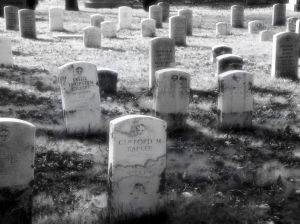The bubonic plague, later called the Black Death raged from 1331 to 1353. In Switzerland, the Jews were accused of poisoning the water supplies, thus causing the plague. In the centuries following the Black Death, bubonic plague continued to break out as it did in London in 1664. The only action that proved effective against plague was to isolate infected people. In 1894, more than 500 years after the Black Death, Japanese and French scientists discovered the germ that caused the plague, a type of bacteria which they named pasteurelli pestis. Over the following decade it was also discovered the germ is transmitted by rats’ fleas.
Family life and marriage before the plague were the fabric of the society. Both husband and wife were provided economically for the family. Marriages were the fabric of international as well as inter-noble relations, the primary source of territory, sovereignty, and alliance and the major business of medieval diplomacy. The relations of countries and rulers depended on dynastic connections and counsinships. Although the free consent of marriage partners was required by the Church, practical politics overlooked this requirement, sometimes with unhappy results.
In everyday life, women of noble as well as non-noble class found equality of function, if not of status, thrust on them by circumstance. Peasant women could hold tenancies and in that capacity rendered the same kinds of service for their holdings as men, although they earned less for the same work. Peasant households depended on their earnings. In the guilds, women had monopolies of certain trades, usually spinning and ale-making and some of the good and textile trades. Certain crafts excluded females except for a member’s wife or daughter. In others they worked equally as men.
The Black Death plague first arrived in England in the summer of 1348 and may have killed 45 percent of the population within a year. By the time of the poll tax of 1377, England’s population, at around 2.75 million, was only half of its pre-plague level. The continued high mortality of the late medieval period meant that by the 1520s, England’s population may have been 2.25 or less. Such high mortality rates resulted in individual social mobility, as people were able to acquire the land, jobs and social positions of those who had died. More generally, population decline meant a social redistribution of wealth, as laborers benefited from high wages and low food prices, while peasants had access to land at a low rent and were able to use the shortage of tenants to bring an end to manorial impositions and restrictions.
Most of the families had lost loved ones to the plague, but they did not grieve about it because they fully expected to soon be dead themselves. Cases of parents deserting their children and children their parents were reported. The marriage rate rose, though not for love. Men and women married immediately afterward in unusual numbers. Some took advantage of orphans to obtain rich dowries that it became unlawful the marriage of female orphans without their kinsmen’s consent. In England, many since the plague had married out of greed, which resulted in childless and unhappy marriages. In families, many twins, sometimes triplets were born and few women were barren. Behavior grew more reckless and callous, blamed on the newly rich who rose from below. Because of intestate deaths, property without heirs, and disputed title to land and houses, a fury of litigation arose. Fraud and extortion practiced upon orphans by their appointed guardians became problematic. The obvious and immediate result of the Black Death was a shrunken population. After killing off most of those susceptible, with increasing mortality of children in the later phases, it eventually receded.
In the spring of 1361, the dreaded black swellings reappeared in England. The Pestis Secunda, sometimes called the mortality of the children, too a particularly high toll of the young. The deaths of the young in the Second Pest halted repopulation. The employment of children increased after the Black Death. The work of children was not considered equivalent to the work of adults: boys were paid less than men, and girls presumably less than women. Only a minority of harvesters included mothers of young children. Most female harvest workers were probably girls, unmarried women, married women without children or women with grown children. Descriptions of babies’ deaths in coroners’ rolls make it evident that babies of mothers working in the fields were often left in the care of older children or elderly people.
Women’s gains were particularly marked after the plague. As tenants, women were, in an age of high mortality and low male replacement rates, now more likely to acquire land as heiresses and by their widow’s right of dower. As laborers, women shared in the general rise in real wages, and given the types of work in which they were most likely to be employed, should have benefited from the disproportionate rise in the wages of the unskilled and the reduction in wage differentials. With skilled labor in short supply, women could find employment in jobs that had once been the preserve of men, as smiths, tanners, carpenters and tilers. The evidence of the poll taxes suggests a ratio of 90-95 men per 100 women in the towns. The late medieval period, in addition to high mortality rates, had a decline in the fertility rate.
In the 17th century, there were changes in the organization and conceptualization of family life and marriage. During this period, patriarchy and individualism, affection and interest, all clashed. In the seventeenth century, women performed their tasks with practiced skill, and were frequently honored accordingly. Wives often kept their husbands’ apprentices under firm control. In the country, women trained servants, looked after poultry and other animals, and took charge of the garden and orchard, managed the dairy, dealt with sales at the market, kept farm accounts, were responsible for household management and the family medicine. In the Civil War (1642-52), women servants defended castles and strongholds, they raised funds, and served as nurses.
After the Civil War it began to be recognized that women were enjoying a new-found independence and and many men deplored that fact. In the next century, after political and philosophical theories had helped further to modify attitudes, women gained further measures of independence. Marriages arranged without reference to the feelings of the bride and bridegroom and with sole regard to the increase of family fortunes, were by the beginning of the eighteenth century, becoming less and less common. In the upper classes, when large sums of money and extensive estates were involved, there were still such marriages.
Attitudes towards the upbringing of children were also changing. In the past parents had been advised to keep their children in awe of them at all times, and because of the high rate of infant mortality, had learned to bear the loss of their offspring. Wealthier parents, saw little of them As babies they were give over the care of we-nurses until time for them to go to school or be placed in the charge of tutors. By the end of the 17th century, however, it was noticed that children were being treated by their parents in a much more kindly way. The family was returning to the bonded type that existed before the plague and marriage was entering a phase when couples decided to unite based on love and not convenience.
References
Cartwright, Frederick. Disease and History. New York: Dorset Press, 1991.
Gottlieb, Beatrice. The Family in the Western World from the Black Death to the Industrial Age. New York: Oxford University Press, 1993.
Stone, Lawrence. Uncertain Unions: Marriage in England 1660-1753. New York: Oxford University Press, 1992.
Reference:
- The Black Death www.insecta-inspecta.com/fleas/bdeath/




